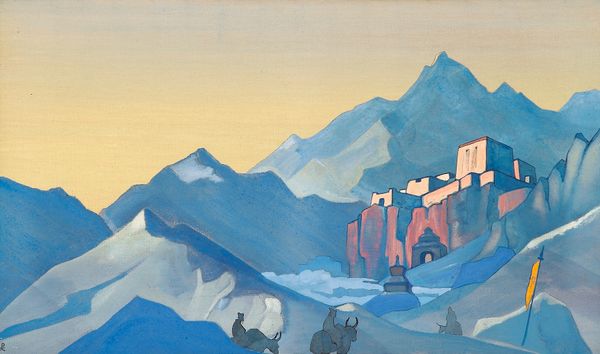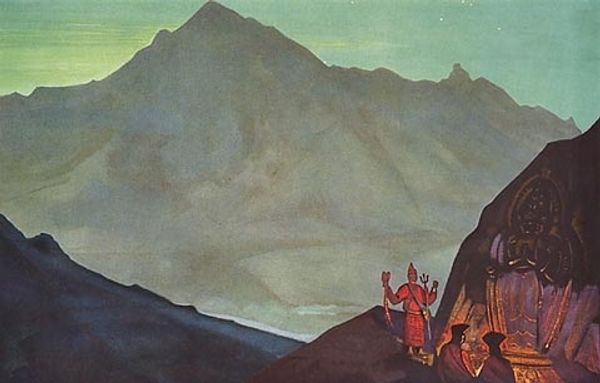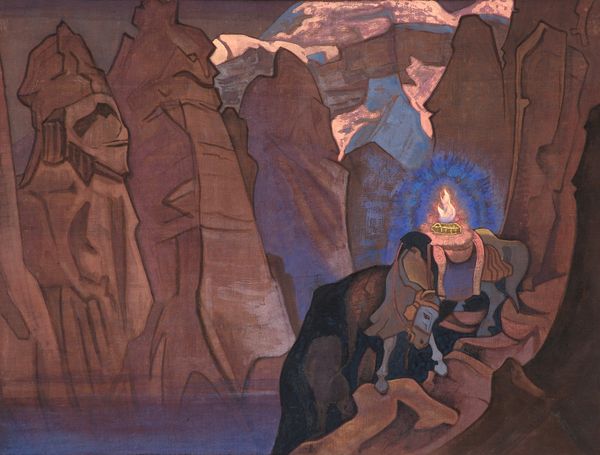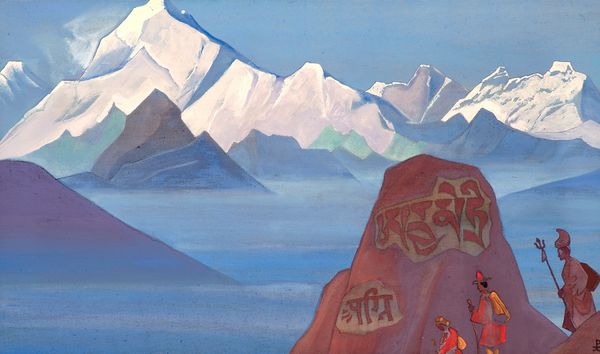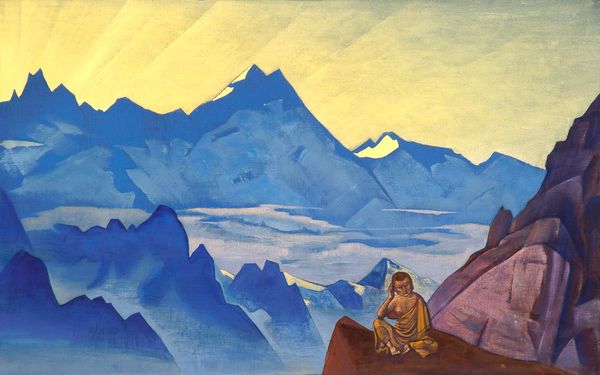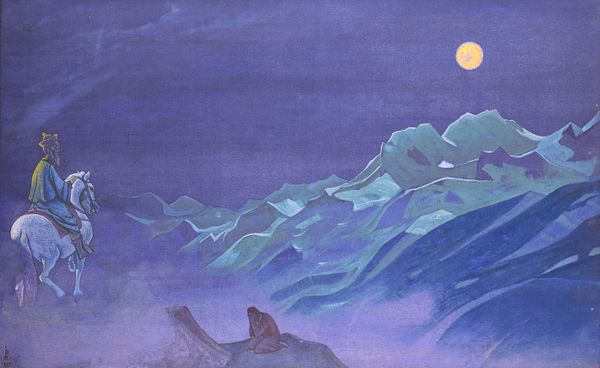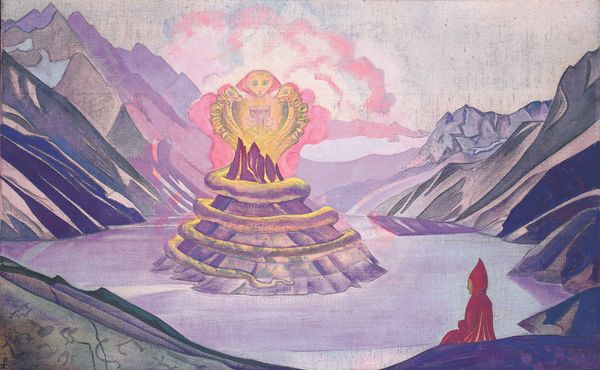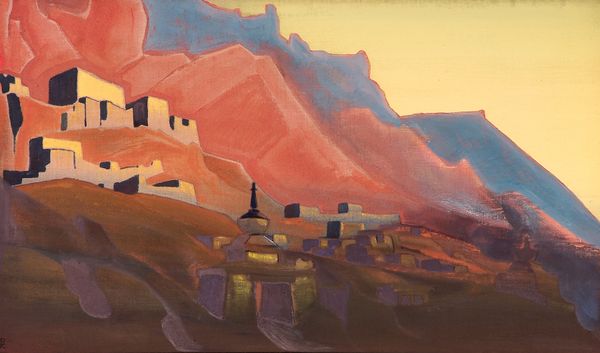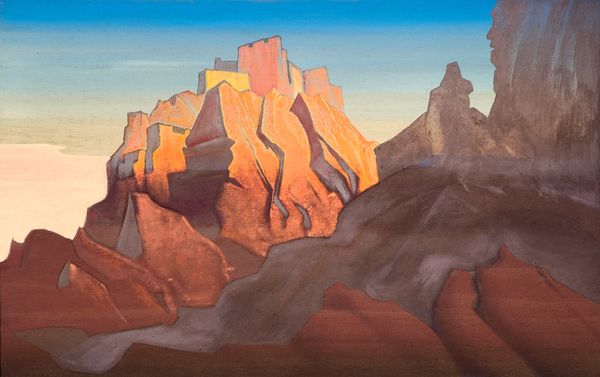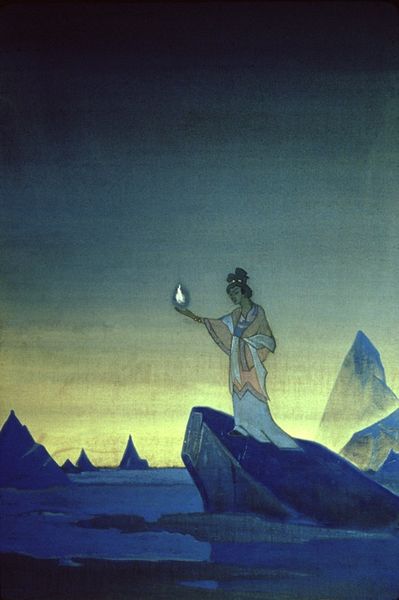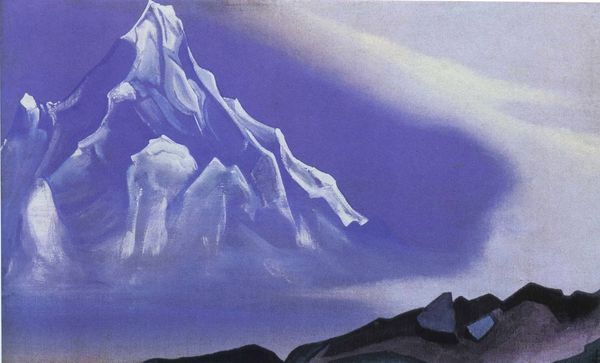
Flowers of Timur (The Lights of Victory) 1933
0:00
0:00
nicholasroerich
State Museum of Oriental Art, Moscow, Russia
Copyright: Public domain
Curator: Standing before us is Nicholas Roerich’s 1933 painting, “Flowers of Timur (The Lights of Victory),” currently residing at the State Museum of Oriental Art in Moscow. It's a tempera on canvas. Editor: My immediate impression is one of solemnity, despite the vibrancy of the landscape. The geometric architecture rising from the earthy ground against a smoky, dreamy background creates a captivating sense of displacement. Curator: Roerich was deeply interested in the historical and spiritual legacy of Central Asia, particularly figures like Timur, also known as Tamerlane. Notice the strong central tower aflame. For Roerich, fire represented enlightenment and purification. Editor: And that tower, with that beacon burning bright atop— it immediately made me think about enduring empires and the idea of 'eternal flame' as the signifier of victory but also vigilance and commemoration. Curator: Right. The medium itself adds to this discussion of symbolism. Tempera lends itself to flat, almost ethereal planes of color, further highlighting the contrast between the tangible earthy foreground and the ephemeral quality of the sky. What kind of material choices are telling here? Editor: Exactly, the layering of pigments to achieve depth is kept at a minimum. It emphasizes that divide: heaven and earth, material struggle and spiritual striving for success, or rather 'victory'. It forces one to contemplate how materials limitations can enhance meaning. But what is the relation of its title? Curator: Timur’s name, etymologically, can mean ‘iron.’ Iron itself is mined and wrought, weaponized, signifying power… Perhaps the “flowers” are a euphemism for the flourishing consequences, intended or otherwise, following conquest? The symbolism connects victory and violence through both natural and industrial terms. Editor: Interesting, but, equally plausible to imagine here a kind of rebirth as well! The flame destroys, of course, but prepares the ground for a fresh start… The image of people struggling to reach the top speaks not just to violent campaigns, but could be a symbol for cultural shift towards progress with potential. Curator: Your iconographical interpretations are intriguing. What I appreciate, examining his artistic labor here, is the confluence of Roerich's theosophical beliefs with a distinct social commentary rendered visible using the earth’s resources—literally creating meaning through materials. Editor: Indeed. We both arrive at Roerich's attempt to synthesize not only his philosophical persuasions but also socio-historical forces—a symbolic expression of labor towards what, as always, remains to be discovered through human action.
Comments
No comments
Be the first to comment and join the conversation on the ultimate creative platform.
